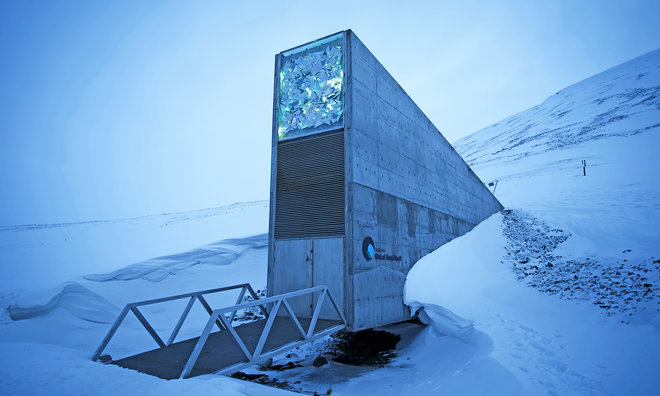
Australia’s ability to survive a global catastrophe is now a little stronger, “backed up” in a remote seed vault deep within in a mountain on the remote Norwegian archipelago of Svalbard, the ABC reports.
Seeds from 32,000 varieties of Australian grain and pasture crops have arrived, carried by regional seed bank chiefs aiming to ensure their survival, writes Steven Schubert from Svalbard, Norway.
The so-called Doomsday Vault, officially known as the Global Seed Vault, received shipments from Australia and countries around the world as part of its 10-year anniversary.
The latest shipment puts the number of species preserved in the vault to more than one million which the organisation which helps to run it estimates is 40 percent of the world’s plants.
“It’s such an amazing, surreal experience, coming here being surrounded by agricultural history,” said Dr Sally Norton from the Australian Grains Genebank.
The seed bank Dr Norton runs in Horsham in western Victoria, one of the two national seed libraries in Australia which have sent seeds to Svalbard, is potentially vulnerable to bushfires as well as other natural and man-made disasters.
“If anything does ever happen it’s really important to have a backup and Svalbard’s an amazing opportunity to be involved in the international effort to safeguard agricultural history,” she said.
Enter the Arctic Doomsday Vault, a final safeguard for the world’s biodiversity.
Steve Hughes from the Adelaide-based Australian Pastures Genebank said storing copies of Australian seeds in Svalbard provided protection for Australian farmers.
“This is the ultimate backup, it is the best thing we could do in terms of risk management,” he said.
“The plants that have underpinned their agricultural systems are safe and secure.”
His deposit of seeds also includes about 1,000 native pastures, such as salt bush and kangaroo grass.
Vault seeds key to adjusting farming to climate change
The Global Seed Vault became colloquially known as the Doomsday Vault thanks to a headline writer in New Scientist.
But the man responsible for the creation of the vault said it was not originally thought of to help humanity survive a global catastrophe.
Cary Fowler was the executive director of the Global Crop Diversity Trust when the vault was opened 10 years ago.
In that time, only one seed bank has had to withdraw its duplicate copies — the vault in the Syrian city of Aleppo which was destroyed in its ongoing civil war.
“We’ve been able to restore the seed bank collections that were endangered, under threat and basically lost because of war in Syria,” he said.
Dr Fowler said he wanted to set up the vault to preserve crop species that are no longer being farmed and were in danger of being lost to humanity.
Those species could have genetic traits like needing less water or thriving in higher temperatures, which could be crucial in adapting agriculture to climate change.
“Naturally inside the vault it’s very cold, below freezing, and in those conditions we expect everything to be just fine — hundreds, indeed thousands of years from now,” Dr Fowler said.
Sally Norton said the Global Seed Vault helps not just Australia’s future food security, but also the world’s.
“For everyone who eats food they’re so tightly linked to agriculture because without agriculture people aren’t going to be able to eat, they’re not going to be able to feed their livestock. So it’s such an important thing for us to be here.”
SheSociety is a site for the women of Australia to share our stories, our experiences, shared learnings and opportunities to connect.

Leave a Reply